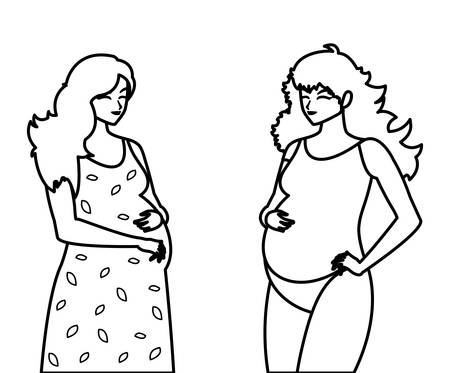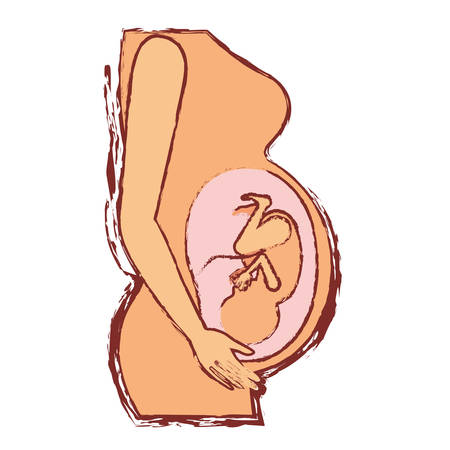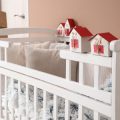1. Understanding Baby-Proofing: Why It Matters
Welcoming a new baby into your home is an exciting milestone, but it also comes with important safety responsibilities. Baby-proofing is the process of making your living space safer for curious little ones who are keen to explore their environment. For UK parents, understanding the unique household risks and taking preventive steps is crucial in reducing accidents and ensuring peace of mind.
Why Baby-Proofing Is Essential
According to the Royal Society for the Prevention of Accidents (RoSPA), thousands of children under five are admitted to A&E each year due to preventable accidents at home. Most injuries occur in familiar settings like the lounge, kitchen, and bedroom—spaces where babies spend most of their time. By identifying hazards early, parents can significantly lower the risk of falls, burns, poisoning, and other common mishaps.
Common Household Risks in British Homes
| Risk Area | Common Hazards | Preventive Measures |
|---|---|---|
| Lounge & Living Room | Corners of furniture, loose cables, small objects | Cushion sharp corners, tidy away cords, remove choking hazards |
| Kitchen | Hot surfaces, cleaning products, knives | Use safety locks, install stove guards, store chemicals out of reach |
| Bedroom & Nursery | Cot bumpers, dangling cords, unsecured furniture | Opt for breathable bedding, keep cords short or out of reach, anchor furniture to walls |
| Bathroom | Slippery floors, medicines, hot water taps | Use non-slip mats, lock medicine cabinets, fit thermostatic valves on taps |
| Stairs & Hallways | No stair gates, cluttered walkways | Install stair gates at top and bottom, keep paths clear |
Key UK Statistics on Home Accidents Involving Babies and Toddlers
- Around 60% of all childhood accidents happen in the home (NHS Digital).
- The most common causes include falls (44%), burns and scalds (16%), and poisoning (8%).
- Boys are statistically more likely to be injured than girls.
- Most incidents take place between 4pm and 7pm—peak times for parental distraction.
By understanding these risks and statistics relevant to British households, parents can make informed decisions when baby-proofing their homes. Being proactive not only keeps your little one safe but also creates a nurturing environment where they can thrive and explore with confidence.
Essential Baby-Proofing Products Every Parent Needs
When it comes to keeping your little one safe at home, choosing the right baby-proofing products is crucial. UK parents have access to a wide variety of safety items designed to reduce household hazards and give you peace of mind. Below, youll find a practical guide to must-have baby-proofing essentials—most of which are readily available in high street shops like Mothercare, Boots, or online retailers such as Amazon UK.
Top Baby-Proofing Products for UK Homes
| Product | Description | Where to Buy |
|---|---|---|
| Socket Covers | Prevents tiny fingers from poking into electrical outlets. Choose British Standard covers for a snug fit. | B&Q, Argos, John Lewis |
| Stair Gates | Essential for blocking off stairs and hazardous areas. Pressure-mounted gates work well for rental homes as they don’t require drilling. | Mothercare, Amazon UK, Boots |
| Cupboard & Drawer Locks | Keeps cleaning supplies and sharp objects out of reach. Adhesive options are easy to install without tools. | IKEA, Tesco, Wilko |
| Corners & Edge Guards | Cushion sharp furniture edges to prevent bumps and bruises when babies start crawling or walking. | Dunelm, The Range, Asda |
| Door Stoppers & Finger Guards | Stops doors from slamming shut on tiny fingers—a common home accident for toddlers. | Etsy UK, Lidl, Sainsbury’s |
| Window Locks & Restrictors | Limits window opening to prevent falls—especially important in flats or multi-storey homes. | B&Q, Screwfix, Homebase |
Expert Tip: Prioritise High-Risk Areas First
Kitchens and bathrooms pose the greatest risks in most UK homes. Begin by securing cupboards containing cleaning products or medicines and installing stair gates at both the top and bottom of staircases. Remember that older properties might have wider gaps on banisters or awkwardly placed sockets—choose flexible solutions that fit your home’s unique layout.
Shopping Locally vs Online: What’s Best?
If you prefer seeing products before buying, local stores like John Lewis or Mothercare offer expert advice and demonstration models. For busy parents or those seeking specific brands (such as Lindam stair gates or Dreambaby locks), online shopping offers convenience and often better deals. Whichever method you choose, always ensure products comply with relevant British safety standards (BS EN 1930 for gates and BS 1363 for socket covers).

3. Room-by-Room Safety Checklist
When it comes to baby-proofing your home, every room presents its own unique set of hazards—especially in the typical British household, where period features, compact layouts, and multi-storey living are common. Use this detailed checklist to safeguard each area and create a safe haven for your little explorer.
Living Room
| Hazard | Solution |
|---|---|
| Sharp fireplace edges | Install corner guards or cushioned hearth protectors; never leave open fires unattended |
| Coffee tables & side units | Use soft edge bumpers and keep breakables out of reach |
| Loose wires & sockets | Secure wires with cord tidies and fit socket covers (BSI-approved) |
| TVs & heavy furniture | Anchor TVs and bookcases to the wall using anti-tip straps |
| Window blinds with cords | Install cordless blinds or use safety cleats for cords out of reach |
Kitchen
| Hazard | Solution |
|---|---|
| Cupboards & drawers | Fit childproof locks, especially on cleaning products and sharp utensils drawers (under UK COSHH guidelines) |
| Kettle & hot drinks | Keep kettles at the back of counters; always use rear hob rings for pans with handles turned inward |
| Cleaning chemicals | Store all chemicals high up or in locked cupboards, following RoSPA guidance on poisons prevention |
| Bins & recycling boxes | Use bins with secure lids and keep small objects like batteries well out of reach |
| Pets’ food bowls & water dishes | Place these in a separate area inaccessible to your baby during playtime/mealtimes |
Bathroom
| Hazard | Solution |
|---|---|
| Slippery floors & bath surfaces | Add non-slip mats inside and outside the tub; mop up spills immediately to prevent falls (NHS advice) |
| Medications & toiletries | Lock away all medicines and personal care items in a high cabinet, ideally one with a lock compliant with BS 2881:1989 standards |
| Taps & water temperature | Install anti-scald devices on taps; set boiler thermostat below 48°C as recommended by UK safety standards |
| Laundry baskets & detergents | Avoid leaving laundry pods/detergent tablets within reach; opt for child-resistant packaging where available |
Bedrooms (including Nursery)
- Cots: Ensure cot bars are no more than 6.5cm apart (as per British safety regulations); avoid pillows, duvets, or soft toys for infants under one year.
- Curtains/Blinds: Secure cords well above cot height using tensioners or cleats.
- Bedsides: Keep nightlights and monitors at least one metre from the cot and secure all cables.
- Dressing tables/wardrobes: Anchor furniture to the wall to prevent tipping, especially in older properties with uneven floors.
- Nappy changing stations: Always use a safety strap and never leave your baby unattended—even for a moment.
- Sockets: Use plug socket covers that conform to UK safety standards.
- Toys: Check toys regularly for loose parts or batteries that could pose choking hazards.
- Laundry baskets: Avoid placing them near windows or radiators where climbing may be tempting.
- Bunk beds (for older siblings): Only suitable for children over six years old per UK guidelines.
- Moses baskets/cradles: Place away from radiators, windows, and direct sunlight.
- Cot mobiles: Remove once your baby can push up on hands and knees.
- Damp/condensation: Ventilate bedrooms daily to avoid mould growth which can trigger allergies or respiratory issues (especially in period homes).
- Nappy disposal bins: Choose pedal-operated bins with tight lids to contain odours and bacteria.
- Bedding: Use fitted sheets that conform snugly to mattresses; avoid loose bedding.
- Dummies/pacifiers: Store in clean containers out of sight when not in use.
The Garden (or Outdoor Spaces)
| Hazard | Solution |
|---|---|
| Garden ponds/water features | Fit rigid mesh covers or temporary fencing around all water sources; never leave babies unsupervised outdoors |
| Garden tools/sheds | Lock tools away securely after use; ensure sheds/outbuildings are locked at all times |
| Plants | Familiarise yourself with common toxic plants in the UK such as foxglove or laburnum; remove or fence off hazardous greenery |
| Patios/paving stones | Check regularly for loose slabs or slippery moss; sweep up leaves promptly to avoid slips |
| Play equipment | Ensure swings/slides meet EN1176 playground standards; check for sharp edges, splinters, or worn fixings regularly |
Your Next Steps…
A thorough room-by-room approach ensures every part of your home is tailored to your family’s needs—offering peace of mind as your baby grows more mobile. Review this checklist regularly as your child develops new skills and curiosity. For further support, consult local authorities like RoSPA or NHS Choices for updated recommendations specific to UK households.
4. Navigating Unique UK Home Features
UK homes often feature architectural elements that are both charming and challenging when it comes to baby-proofing. As a parent, it’s crucial to recognise and address these unique hazards to create a safe environment for your little one. Below, we explore practical solutions for some of the most common features found in British homes.
Fireplaces
Many UK homes have open fireplaces or wood-burning stoves that can pose significant risks to babies and toddlers. To minimise danger:
- Install a secure fireguard: Choose a sturdy, fixed fireguard that is compliant with British safety standards (BS 8423).
- Avoid decorative items: Remove matches, pokers, and other small or sharp objects from the hearth area.
- Routine checks: Ensure the fireguard remains in place and undamaged.
Sash Windows
Sash windows are a common feature in older UK properties but can present fall hazards or finger traps for curious children. Consider these protective measures:
- Window restrictors: Fit restrictors to prevent windows opening more than 10cm.
- Cord safety: Keep pull cords out of reach or use cord winders to avoid strangulation risks.
- Regular maintenance: Check for loose frames and ensure smooth operation to avoid sudden slamming.
Radiators and Hot Water Pipes
The UK climate means central heating is essential, but radiators and exposed hot water pipes can cause burns. Here’s how you can protect your child:
| Hazard | Solution |
|---|---|
| Hot Radiators | Install radiator covers made from heat-resistant materials; check surface temperatures regularly. |
| Exposed Pipes | Use pipe lagging or insulation sleeves available at most DIY stores. |
| Towel Rails | Avoid letting children climb or hang on heated rails; consider positioning them higher up if possible. |
Additional UK-Specific Tips
- Mains Sockets: Unlike many countries, UK sockets have built-in safety shutters. While socket covers are not generally recommended, keep an eye on damaged outlets and always repair promptly.
- Cupboards Under Stairs: These quirky storage spaces often contain cleaning products or tools—install childproof locks and store hazardous items out of reach.
- Narrow Hallways & Door Frames: Use corner guards and door stoppers to cushion sharp edges and prevent finger injuries.
Professional Assessment
If you’re unsure about baby-proofing solutions for older or listed properties, consider seeking advice from a local safety expert familiar with UK building regulations. Proactive planning ensures your home remains both characterful and safe as your baby grows.
5. Nutrition and Safe Mealtime Practices
Ensuring your baby’s nutrition and safety during mealtimes is a crucial part of baby-proofing your home. Weaning is an exciting milestone, but it comes with new risks that UK parents should be aware of. Creating a safe weaning environment, practising high chair safety, and minimising choking hazards are all essential to support healthy eating habits and protect your little one.
Safe Weaning Environments
Set up a designated weaning area in your kitchen or dining room where distractions are minimal. Always supervise your baby closely when they’re eating, and keep pets away from the table to avoid accidents. Use easy-clean mats or splash mats under the high chair to manage spills, and ensure all surfaces are clean before meals to prevent bacterial contamination.
High Chair Safety Tips
| Safety Aspect | Best Practice |
|---|---|
| Stability | Choose a sturdy, BS EN 14988-compliant high chair with a wide base to prevent tipping. |
| Harness | Always use a five-point harness, securing both shoulders, waist, and crotch straps for maximum safety. |
| Positioning | Place the high chair well away from walls and counters to stop your baby from pushing off and toppling over. |
| Supervision | Never leave your baby unattended in the high chair—even for a moment. |
| Regular Checks | Routinely inspect for loose screws, cracks, or broken parts. |
Minimising Choking Hazards During Family Mealtimes
- Food Size & Texture: Serve foods as soft finger foods or mashed/puréed options suitable for your baby’s stage of development. Cut small items like grapes or cherry tomatoes into quarters lengthwise.
- Avoid High-Risk Foods: Refrain from offering whole nuts, popcorn, hard sweets, raw carrot sticks, or chunks of apple until your child is older (usually after age five).
- Sit Upright: Ensure your baby sits upright in their high chair—not slouched or lying back—during every meal.
- No Distractions: Keep toys, screens, and other distractions away from the dining area so your baby can focus on eating safely.
- Model Eating: Eat together as a family where possible; babies learn by watching you chew and swallow food safely.
Choking First Aid: Be Prepared
If your child does choke, it’s vital to know what to do. The NHS recommends following their baby choking first aid guidance. Consider attending a local paediatric first aid course for hands-on training and confidence during emergencies.
Nutritional Balance and Meal Inspiration
A balanced diet supports growth and immunity during weaning. Offer a variety of fruit, vegetables, proteins (like eggs, lentils, fish), iron-rich foods (fortified cereals or spinach), dairy (yoghurt or cheese), and starchy foods (potatoes or porridge oats). Rotate different options throughout the week for both nutrition and taste exploration.
6. First Aid Essentials for UK Parents
Even with the most carefully baby-proofed home, minor accidents can still happen. For UK parents, having a solid grasp of basic first aid skills is crucial for responding calmly and effectively to any mishaps. Below is an outline of essential first aid knowledge every British parent should have, as well as resources to help you get prepared.
Basic First Aid Skills Every Parent Should Know
| First Aid Skill | Why Its Important | Key Steps |
|---|---|---|
| CPR (Cardiopulmonary Resuscitation) for Infants & Children | Life-saving in case of cardiac or breathing emergencies | Check responsiveness, call 999, give rescue breaths and chest compressions as taught by professionals |
| Treating Choking | Prevents suffocation from small objects or food | Bend child forward, give back blows and chest thrusts; learn age-appropriate techniques |
| Managing Burns & Scalds | Common household injuries from hot surfaces or liquids | Cool area with running water for 20 minutes, cover with cling film, seek medical help if needed |
| Dealing with Cuts & Grazes | Reduces risk of infection and controls bleeding | Apply gentle pressure, clean wound, use sterile dressing or plaster |
| Treating Bumps & Head Injuries | Monitor for signs of concussion or serious injury | Apply a cold compress, observe child closely, seek medical attention if symptoms worsen |
First Aid Kit Checklist for UK Homes
- Sterile plasters (various sizes)
- Sterile dressings and bandages
- Cleansing wipes or saline solution
- Adhesive tape and safety pins
- Thermometer (digital preferred)
- Child-friendly pain relief (paracetamol/ibuprofen)
- Tweezers and scissors (blunt-ended)
- Instant cold pack and burn gel dressing
- A booklet on basic first aid procedures (such as St John Ambulance’s guide)
- Emergency contact numbers card (GP, NHS 111, local hospital)
Where to Learn Child First Aid in the UK
The best way to gain confidence is through hands-on courses. Here are some reputable organisations offering child first aid training across the UK:
| Provider | Description & Locations |
|---|---|
| British Red Cross | Bespoke courses for parents and carers; available online and at various centres nationwide. |
| St John Ambulance | Pediatric first aid courses; classroom-based learning across England, Wales, and Northern Ireland. |
| NCT (National Childbirth Trust) | Baby first aid workshops ideal for new parents; offered in partnership with the Red Cross. |
| NHS Resources (via NHS website) | Free guides, videos, and advice tailored for British families. |
Your Next Steps: Be Prepared, Stay Confident!
No parent wants to imagine their child in distress, but being equipped with essential first aid skills ensures you’re ready for anything. Regularly review your knowledge, keep your first aid kit updated and accessible, and consider attending a refresher course every couple of years. With these steps in place, you’ll be able to provide quick care and peace of mind as you nurture your child’s safe development at home.


